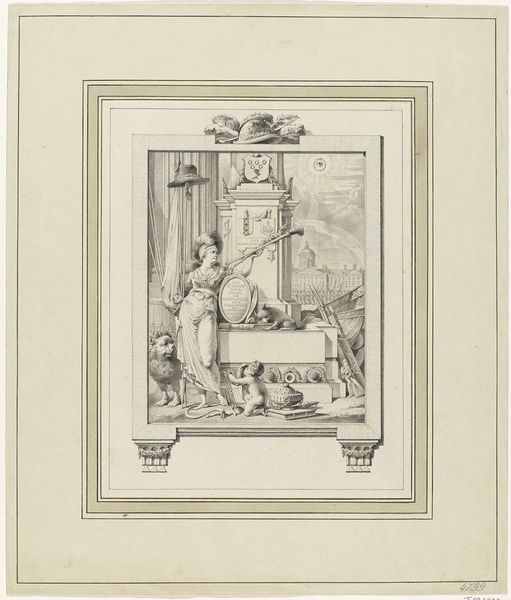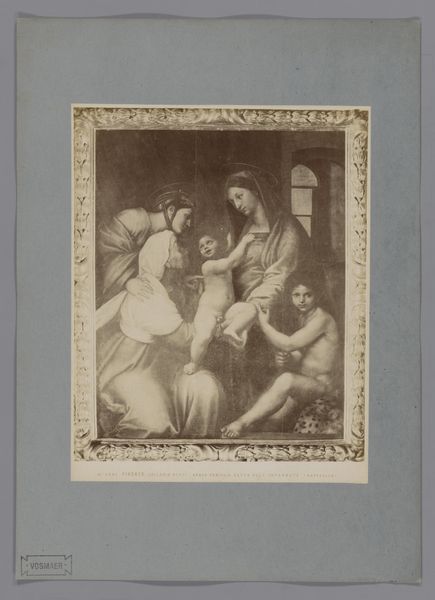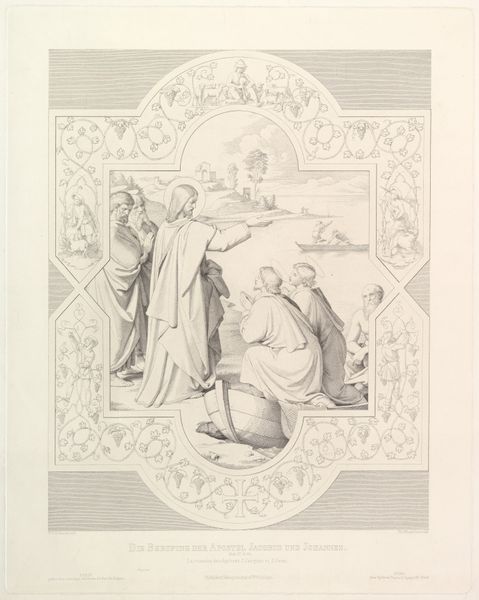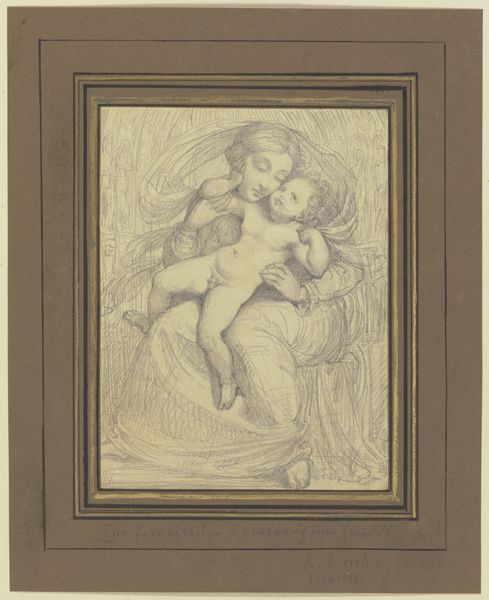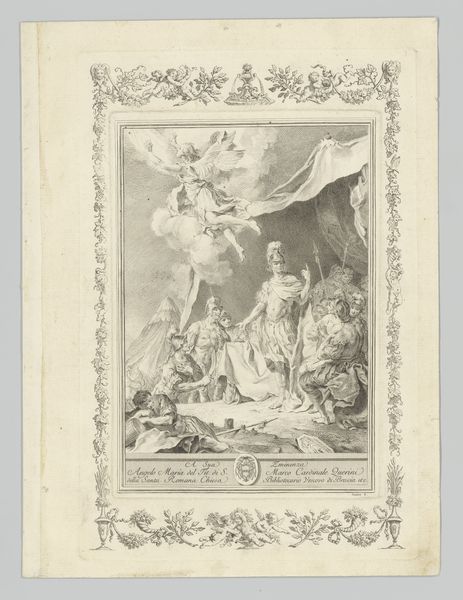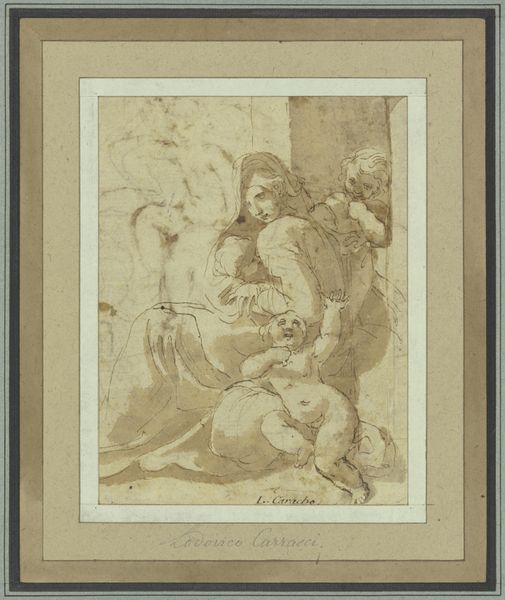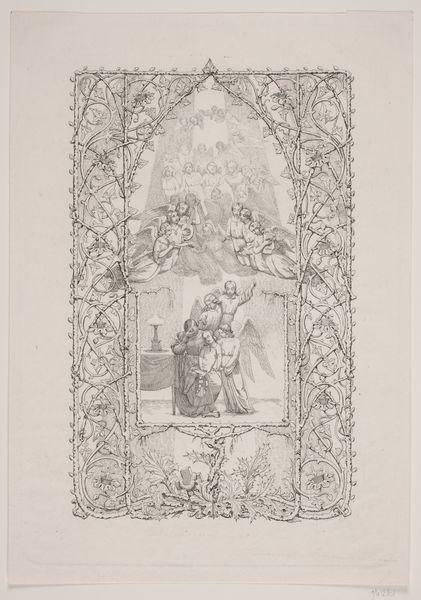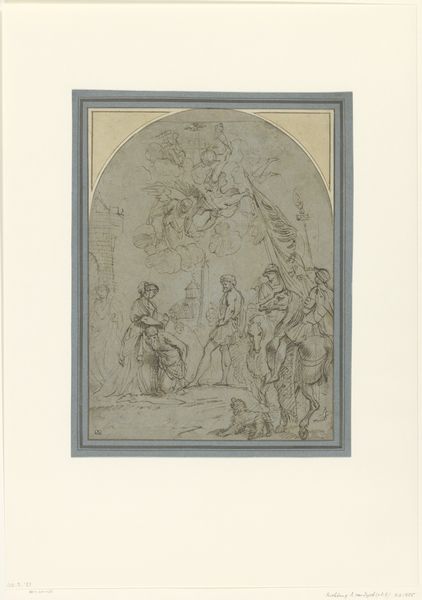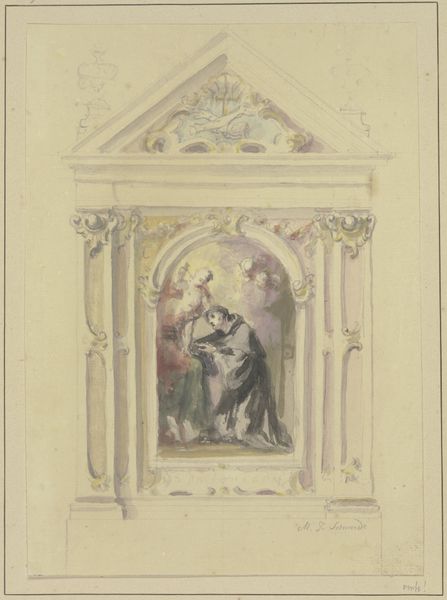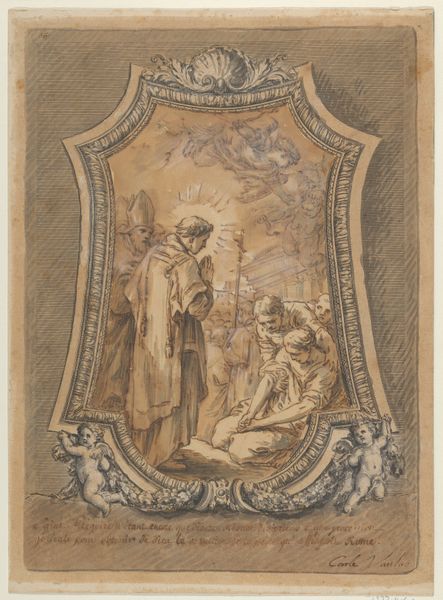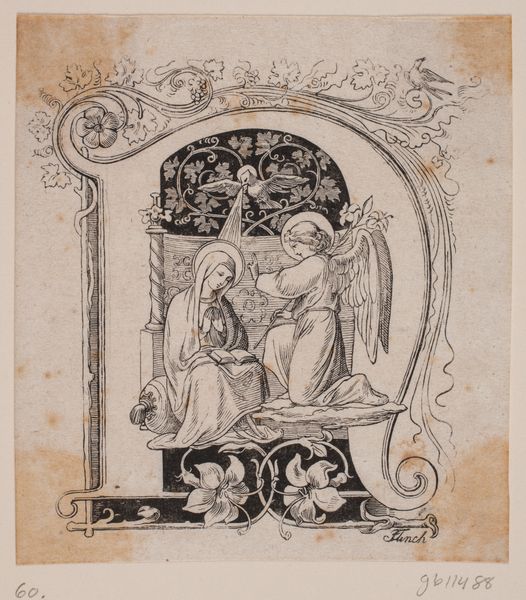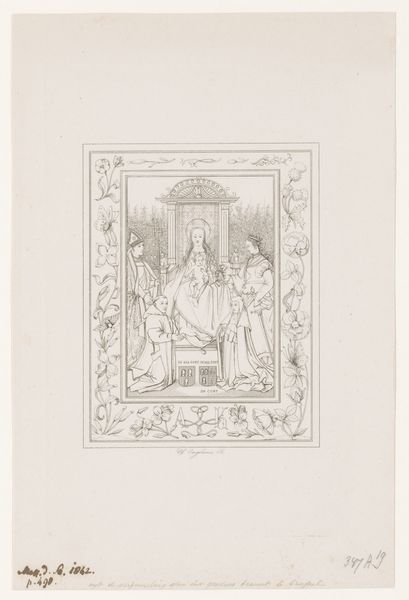
drawing, paper
#
portrait
#
drawing
#
16_19th-century
#
figuration
#
paper
#
german
#
romanticism
#
history-painting
Copyright: Public Domain
Curator: This delicate drawing, rendered in pencil on paper, is titled "Die Kunst wendet sich zur Religion" or "Art Turns to Religion," and it was created around 1818 by Carl Christian Vogel von Vogelstein. Editor: It strikes me as so restrained, almost austere. Despite the religious subject, it's muted, a study in grey, conveying perhaps the seeking or questioning nature of faith. Curator: Precisely. The artist, deeply embedded in German Romanticism, aimed to capture the revival of religious sentiment following the Napoleonic era. Notice the Madonna and Child enthroned, approached by figures representing the arts, bearing gifts. Editor: The setting is quite striking, with the checkered floor receding into a distant landscape—suggestive of the tensions of a newly secularized society in pursuit of transcendent answers? And how very German to encase the whole in decorative religious framing with attending angel figures! Curator: Indeed. Vogel von Vogelstein, later known for his portraits of European royalty, utilized these figures as symbols—art offering itself to religion. The artist, grappling with his changing world, represents in these offering figures, the re-dedication of human skill towards a spiritual focus, a common Romantic theme. Editor: What is interesting to me is not the surrender of skill but the sense that "art" is positioned as a woman petitioning for recognition, while a male figure stands slightly to the fore. What sort of negotiation do we see in that act of supplication? Is it as simple as devotion? Curator: Perhaps it represents the more intricate dialectic between the rational and spiritual yearnings characteristic of that post-Enlightenment period. This return toward faith echoes within it echoes of earlier forms as much as anticipates new arrangements and accommodations within shifting geopolitical systems. The past and future struggle. Editor: In the end, perhaps the artwork’s enduring impact resides in its very questioning—its open-ended depiction of art's uneasy reconciliation with a resurgent religious feeling, in response to social and political tensions of the time. Curator: I find this rendering affecting as an artefact of cultural aspiration from one age as relevant to another today.
Comments
No comments
Be the first to comment and join the conversation on the ultimate creative platform.

